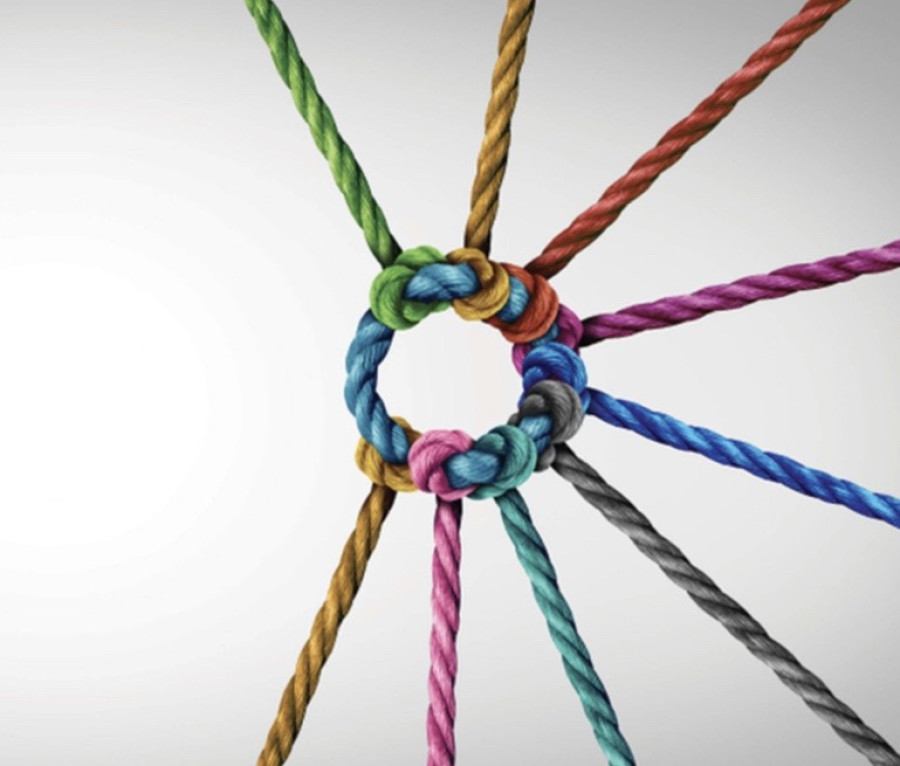Columns
Reviving the world after Covid-19 crisis
Focusing on development work in line with SDGs will be important in the days to come
Gokarna Awasthi
The Covid-19 pandemic looks poised to create a huge human crisis. To address problems related to health, economy, social and environmental issues we need to have a multidimensional approach of development, at least, for the next decade.
In this scenario, the Sustainable Development Goals (SDGs) approach could be the framework for reviving and accelerating development work after this pandemic. The integrated and wider milestone set in SDGs, also called the global goals, will help to revive the world in a faster and systematic way.
There are 17 goals, 169 targets and more than 230 indicators adopted in the SDGs. In our context Nepal has identified 479 indicators to implement and achieve global goals.
SDGs have divided important issues like poverty elimination, access to health, education facilities, gender issues, taking care of the environment into different goals and says development without cooperating these issues will not last long. For example, Goal 3 is about good health and well-being. This is paramount in the present context. The main objective of this goal is to provide health facilities to the citizens in their doorsteps at an affordable price.
SDG 3.3 aims to end the epidemics of aids, tuberculosis, malaria and neglected tropical diseases and combat hepatitis, water-borne diseases, along with other communicable diseases by 2030. Covid-19 pandemic directly relates to this target. The world needs to urgently act now and be prepared for future pandemics.
Countries have to prioritise investments with a keen focus on human development and overall preparedness against threats to the human race. Adequate resources and willingness to spend it will be crucial to prepare the world to battle further health pandemics in future.
Epidemics and natural disasters are one of the major causes that push vulnerable people below the poverty line within a short period of time. The United Nations has shown that at least 500 million people will be forced to fall below the poverty line due to Covid-19. The 2015 earthquake pushed around 700 thousand people in Nepal under the poverty line.
Goal 1 aims to eradicate poverty across the world. In our case we have identified 30 indicators to address multiple aspects of poverty. Nepal has an ambition to reduce multidimensional poverty to 6 percent by 2030. Indicators that are incorporated in goal one have not only set up ambitions but also suggested multiple sectors that need to be incorporated to reduce poverty sustainably.
Due to worldwide lockdown around 1.8 billion children are at home. According to the World Bank, there are three risks associated with this lockdown related to education and early childhood development. There is a high chance of dropout rate. This is a major problem in Nepal too as government data shows that around 60 percent of children who enrolled at grade one failed to reach grade 10.
Goal 4 of the SDGs has identified major challenges of the education sector worldwide and targets of the decade. These indicators will help prioritise our efforts even after pandemics.
According to a UN Women report, 37 percent of women in South Asia and up to 68 percent of women in the Pacific have experienced violence at the hands of their intimate partners during the first 100 days of Covid-19. These unheard voices of women will have a long term impact in our socio economic development. To address the gender violence related challenges the world needs to have a broader approach.
SDG 5 aims to reduce any form of gender violence by 2022. SDG 5.2 states elimination of all forms of violence against all women and girls in the public and private spheres.
Hygiene has always been crucial in the development process, particularly when it is related to good health. Washing hands has become one of the major ways to protect ourselves from viruses. Goal 6 of SDGs is about good sanitation and a safe drinking water facility.
According to the International Labour Organisation, 3.3 billion workers are either fully or partially affected by the lock down. Around 1.25 billion workers are at a high risk of losing jobs. In Nepal, it is estimated that more than a million informal sector workers have lost their jobs temporarily or permanently and are in need of relief materials from the state.
Goal 8 for instance is focused on economic growth with a decent work environment which appears to be the most affected area following the pandemic and worldwide lockdown.
According to the latest report published by the World Trade Organisation the volume of merchandise trade could plunge down to 32 percent in 2020. Economic growth rate of the world will fall down to 1.5 percent from an earlier projection of 3.4 percent. The International Monetary Fund has projected a 2.5 percent growth rate for Nepal.
This pandemic will further increase inequality. Billions of jobs lost will be the major factor that will create further inequality even in the developed countries. Developing and least developed countries will be further affected by the economic downturn. There is a high chance that countries will adopt protectionist approaches to revive their economy. That will hit the livelihood of the poor people in the least developed countries and refugees. It will also have a huge impact on the economy of developed countries. As of now more than 22 million people have registered themselves as unemployed in the United States.
Focusing on development work in line with SDGs will be important in the days to come for various reasons. First, there will be limited resources left in the country;s treasury after this pandemic and at the same time development needs will increase. SDGs framework gives an idea to implement development work with limited sources.
Secondly, a coordinated and time bound development approach is needed to address these multidimensional needs. For instance, SDGs roadmap prepared by National Planning Commission (NPC) has set milestones of 2022, 2025 and 2030 to achieve different goals. Milestones of 2022 and 2025 are the reminders for us to accelerate our efforts towards achieving global goals. SDGs have incorporated people, planet, peace, prosperity and partnership for the prosperous world. So SDGs framework is important for integrated and coordinated development.
Third is partnership. There is a high chance that the developed countries will be adopting protectionist approaches after this pandemic. We have now realised that pandemics or natural disasters are not reserved for the poor and vulnerable groups.
This pandemic has taught us that no country is perfect to handle this kind of crisis and nothing should be neglected. As the core principle of SDGs is leaving no one behind, it is the best approach of development for the next decade for a prosperous world after this pandemic.
***
What do you think?
Dear reader, we’d like to hear from you. We regularly publish letters to the editor on contemporary issues or direct responses to something the Post has recently published. Please send your letters to [email protected] with "Letter to the Editor" in the subject line. Please include your name, location, and a contact address so one of our editors can reach out to you.




 8.12°C Kathmandu
8.12°C Kathmandu















